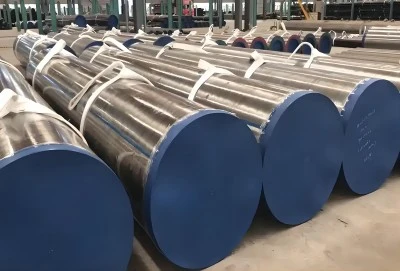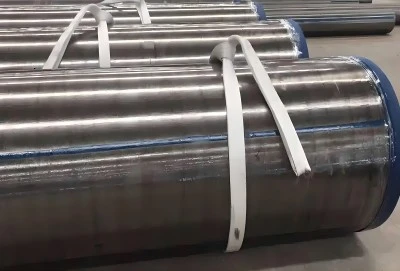When it comes to pipeline infrastructure, the integrity and longevity of the pipes used are of utmost importance. Carbon steel API 5L X65 PSL1 pipes are widely utilized in the oil and gas industry due to their excellent strength and durability. However, even these robust pipes require protection against corrosion and other environmental factors. This is where coatings come into play, serving as a crucial line of defense for these vital components of our energy infrastructure.
In this comprehensive guide, we'll explore the various coatings used for API 5L X65 PSL1 pipes, with a particular focus on two popular options: Fusion Bonded Epoxy (FBE) and Three-Layer Polyethylene (3LPE) coatings. We'll also discuss why these coatings are essential and whether API 5L X65 PSL1 pipes can be used without them. Let's dive in!
|
|
|
Why is FBE (Fusion Bonded Epoxy) coating common for API 5L X65 PSL1?
Fusion Bonded Epoxy (FBE) coating has become a go-to choice for protecting carbon steel API 5L X65 PSL1 pipes and for good reason. This thermosetting polymer coating offers a unique combination of properties that make it ideal for pipeline applications.
One of the primary advantages of FBE coating is its excellent adhesion to steel surfaces. The application process involves heating the pipe to temperatures around 200°C (392°F) and then electrostatically spraying the epoxy powder onto the surface. This creates a strong chemical bond between the coating and the pipe, ensuring long-lasting protection against corrosion.
FBE coatings also provide exceptional resistance to a wide range of chemicals, including hydrocarbons, acids, and alkalis. This makes them particularly suitable for use in the oil and gas industry, where pipes are often exposed to harsh chemical environments. The coating's ability to withstand these conditions helps to maintain the integrity of the pipe and prevent premature failure.
Another significant benefit of FBE coatings is their ability to withstand high temperatures. Carbon steel API 5L X65 PSL1 pipes are often used in applications where they may be exposed to elevated temperatures, and FBE coatings can typically withstand temperatures up to 110°C (230°F) in continuous service. This temperature resistance ensures that the coating remains effective even in challenging operating conditions.
FBE coatings also offer excellent flexibility, which is crucial for pipeline applications. As pipes are transported, installed, and subjected to various stresses during operation, the coating needs to be able to flex and bend without cracking or peeling. FBE coatings provide this necessary flexibility while maintaining their protective properties.
Furthermore, FBE coatings are environmentally friendly, as they contain no volatile organic compounds (VOCs) and are free from heavy metals. This makes them a sustainable choice for pipeline protection, aligning with increasingly stringent environmental regulations.
The versatility of FBE coatings is another factor contributing to their widespread use. They can be applied as a single-layer system or as part of a multi-layer coating system, depending on the specific requirements of the project. This flexibility allows for customized protection solutions tailored to the unique needs of each pipeline installation.
How does 3LPE coating improve API 5L X65 PSL1 pipe longevity?
While FBE coatings offer excellent protection for carbon steel API 5L X65 PSL1 pipes, Three-Layer Polyethylene (3LPE) coatings take this protection to the next level. As the name suggests, 3LPE coatings consist of three distinct layers, each serving a specific purpose in safeguarding the pipe.
The first layer of a 3LPE coating system is typically an FBE coating, which provides the excellent adhesion and corrosion resistance we discussed earlier. This layer acts as the foundation for the entire coating system, ensuring a strong bond with the pipe surface.
The second layer is a copolymer adhesive, which serves as a bridge between the FBE layer and the outer polyethylene layer. This adhesive layer enhances the overall bond strength of the coating system and provides additional flexibility.
The third and outermost layer is composed of polyethylene, which offers superior mechanical protection and resistance to environmental factors. This layer provides excellent resistance to impact, abrasion, and penetration, making it ideal for protecting pipes during transportation, installation, and operation.
Can API 5L X65 PSL1 pipes be used without coatings?
While it is technically possible to use carbon steel API 5L X65 PSL1 pipes without coatings, it is generally not recommended for most applications, especially in the oil and gas industry. Here's why:
1. Corrosion Vulnerability: Uncoated carbon steel pipes are highly susceptible to corrosion, particularly in environments with moisture, oxygen, or corrosive substances. In the oil and gas industry, where pipes are often exposed to harsh chemicals and varying environmental conditions, corrosion can quickly compromise the integrity of the pipeline.
2. Reduced Lifespan: Without a protective coating, API 5L X65 PSL1 pipes would have a significantly shorter lifespan. Corrosion and other forms of degradation would occur at an accelerated rate, leading to more frequent repairs, replacements, and potential failures.
3. Safety Concerns: In critical applications such as oil and gas transportation, pipeline failures can have severe consequences, including environmental damage, safety hazards, and economic losses. Coatings play a crucial role in preventing such failures and ensuring the safe operation of the pipeline.
4. Regulatory Requirements: Many industry standards and regulations require the use of protective coatings on pipelines. For example, the API (American Petroleum Institute) and NACE (National Association of Corrosion Engineers) provide guidelines and standards for pipeline coatings that are widely adopted in the industry.
5. Cathodic Protection Limitations: While cathodic protection systems can help prevent corrosion in uncoated pipes, they are most effective when used in conjunction with high-quality coatings. Relying solely on cathodic protection for uncoated pipes can be less efficient and more costly in the long run.
6. Economic Considerations: Although using uncoated pipes might seem like a cost-saving measure initially, the long-term expenses associated with increased maintenance, repairs, and premature replacements far outweigh the upfront costs of applying protective coatings.
That being said, there are some limited situations where uncoated API 5L X65 PSL1 pipes might be used:
1. Temporary Installations: In some cases, pipes may be used for short-term, temporary installations where the risk of corrosion is minimal, and the cost of coating is not justified.
2. Controlled Environments: In certain indoor or highly controlled environments where exposure to corrosive elements is strictly limited, uncoated pipes might be used. However, this is rare in the oil and gas industry.
3. Specialized Applications: Some specific applications may require uncoated pipes for technical reasons, such as certain types of heat exchangers or process equipment. However, these are typically not related to standard pipeline transportation of oil and gas.
China Carbon Steel API 5L X65 PSL1 Pipe Manufacturer
Protective coatings play a crucial role in ensuring the longevity, safety, and efficiency of carbon steel API 5L X65 PSL1 pipes. While FBE and 3LPE coatings are among the most popular choices, the selection of the appropriate coating depends on the specific requirements of each project, including environmental conditions, operating temperatures, and regulatory standards.
As we've discussed, using these pipes without coatings is generally not recommended due to the increased risk of corrosion and reduced lifespan. The benefits of properly applied coatings far outweigh their initial costs, making them an essential component of modern pipeline systems.
LONGMA GROUP products API 5L X65 Pipe is available in outer diameters ranging from 1/2" to 80" (21.3mm to 2032mm), with wall thickness options from SCH10 to SCH160 (6.35mm to 59.54mm). The pipe lengths are offered from 6m to 18m, and the pipe ends can be supplied with either Beveled Ends (BE) or Plain Ends (PE) if you are choosing your China carbon steel api 5l x65 psl1 pipe manufacturer, welcome to contact LONGMA GROUP at info@longma-group.com.














